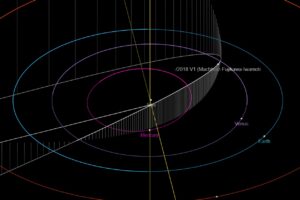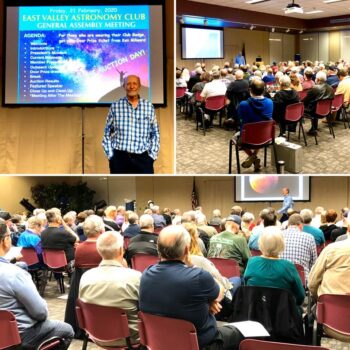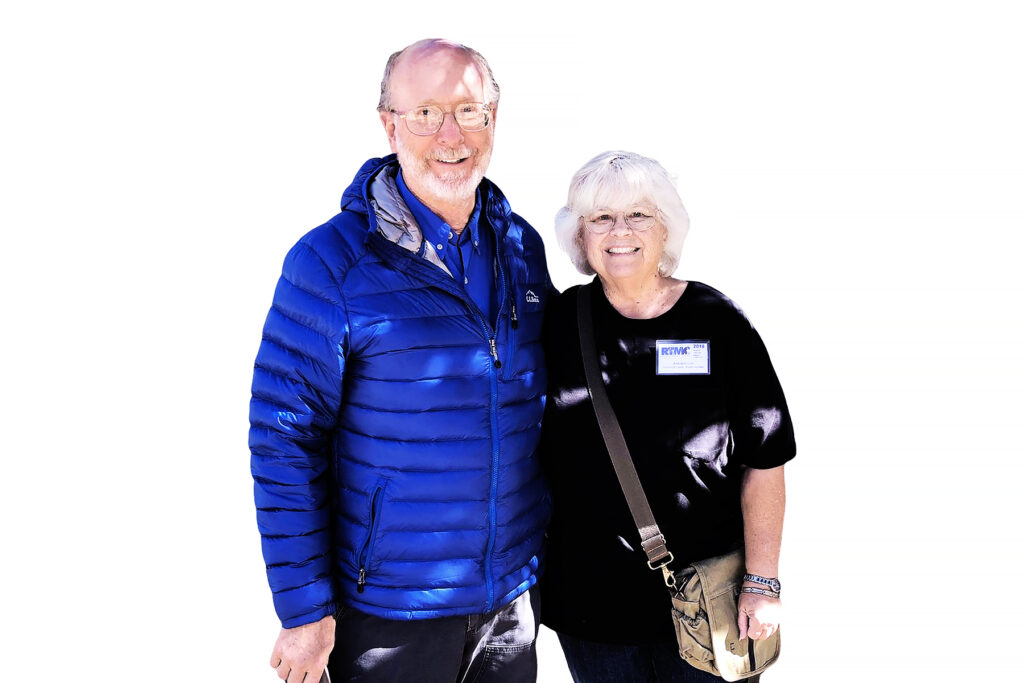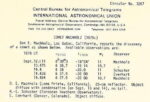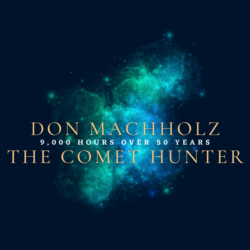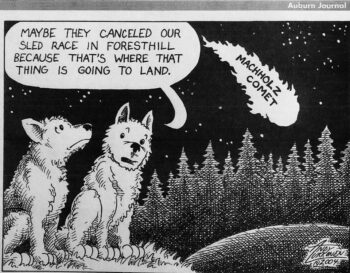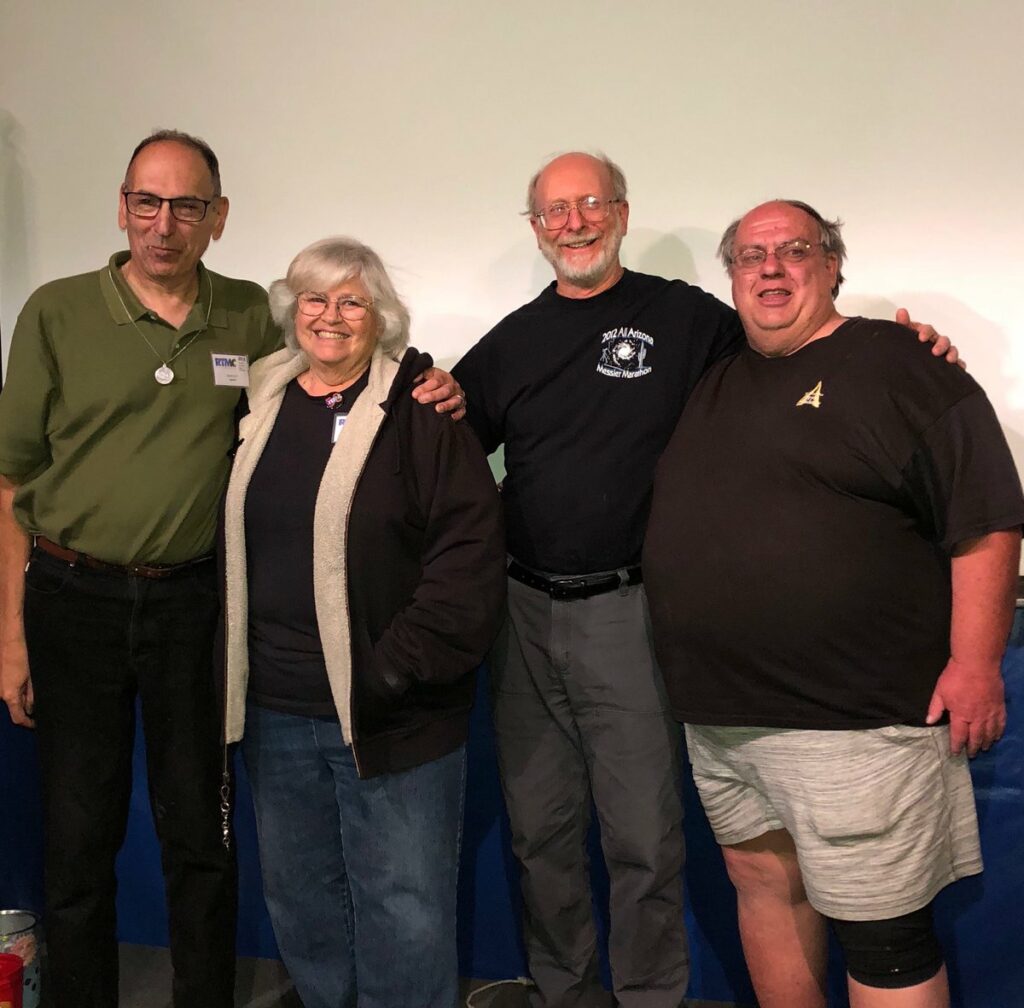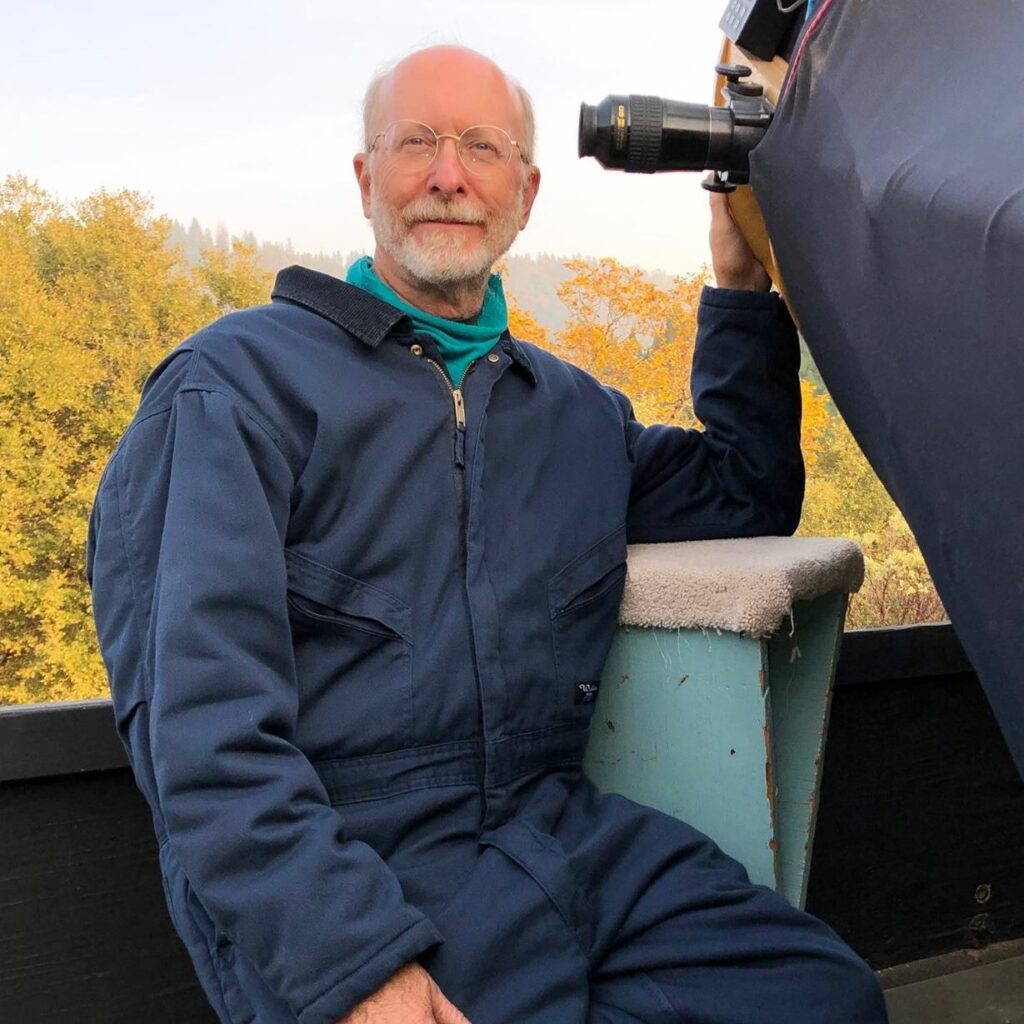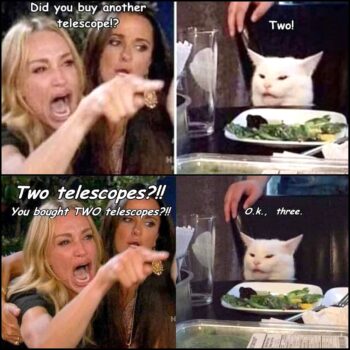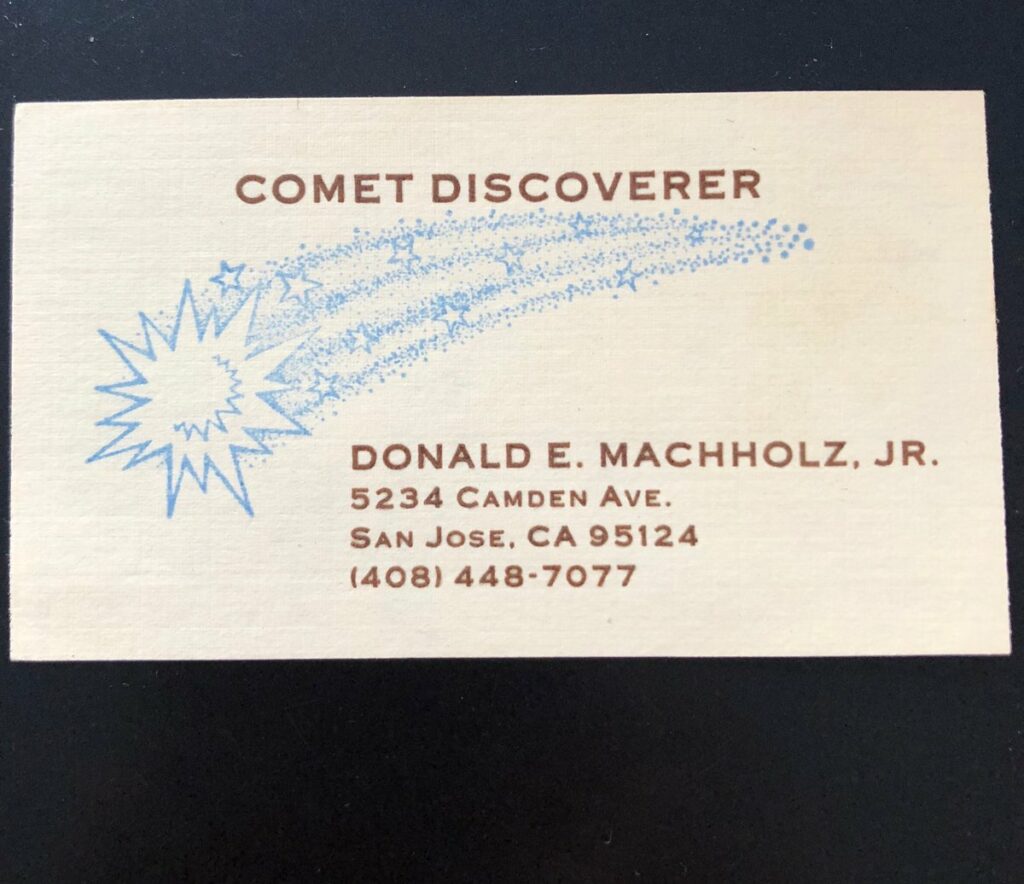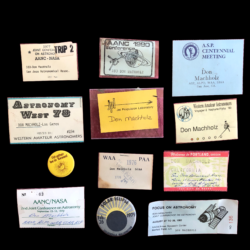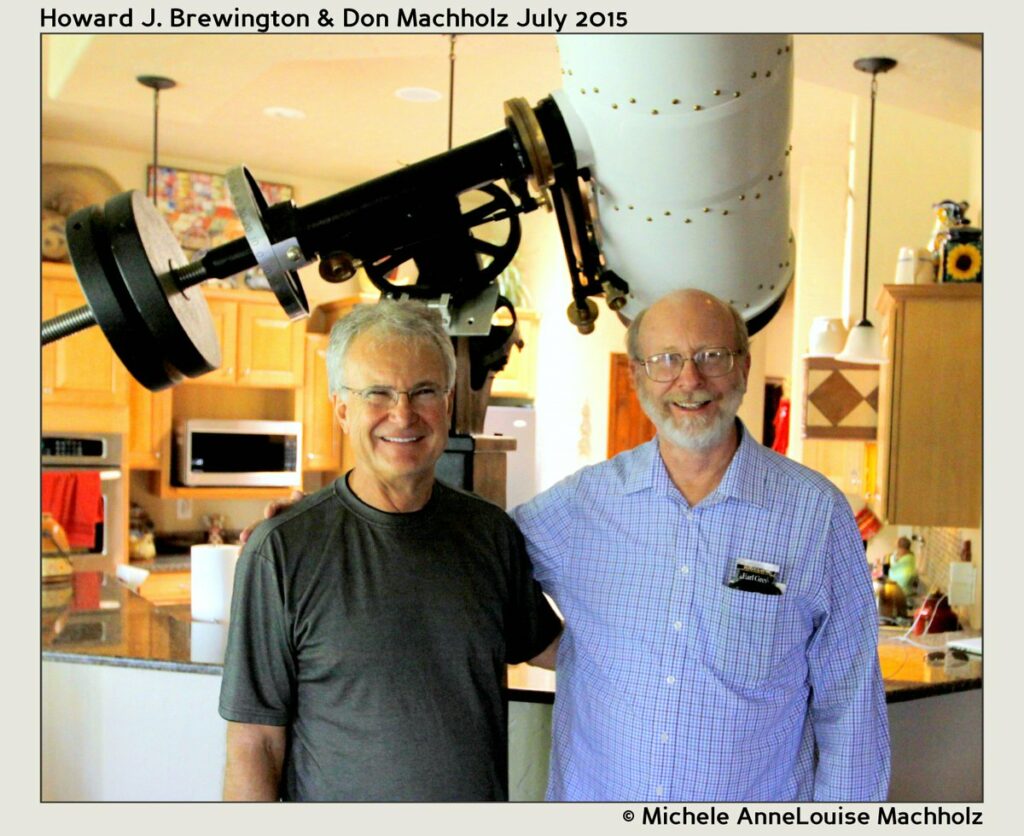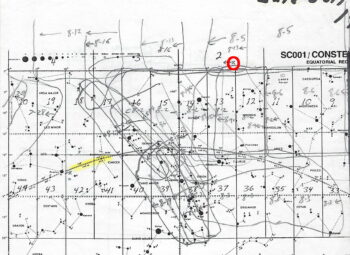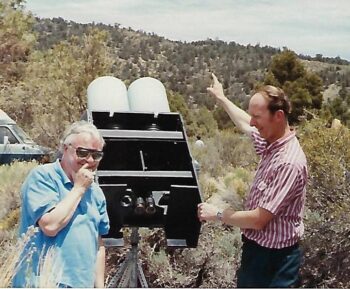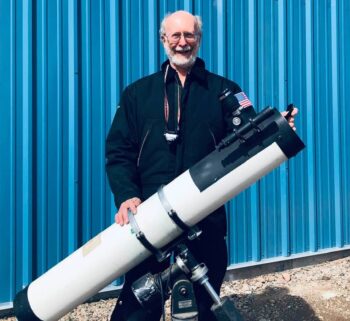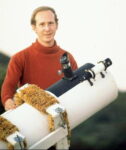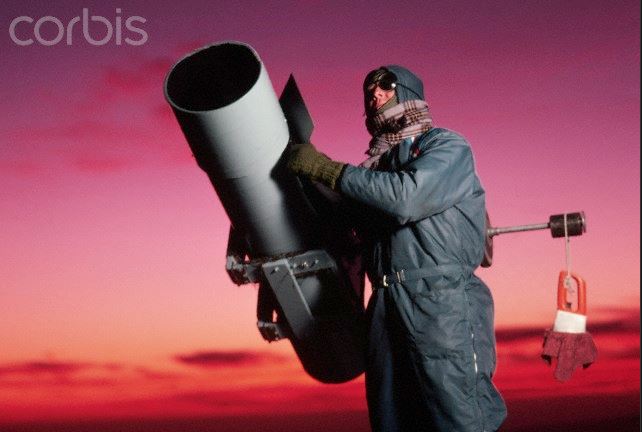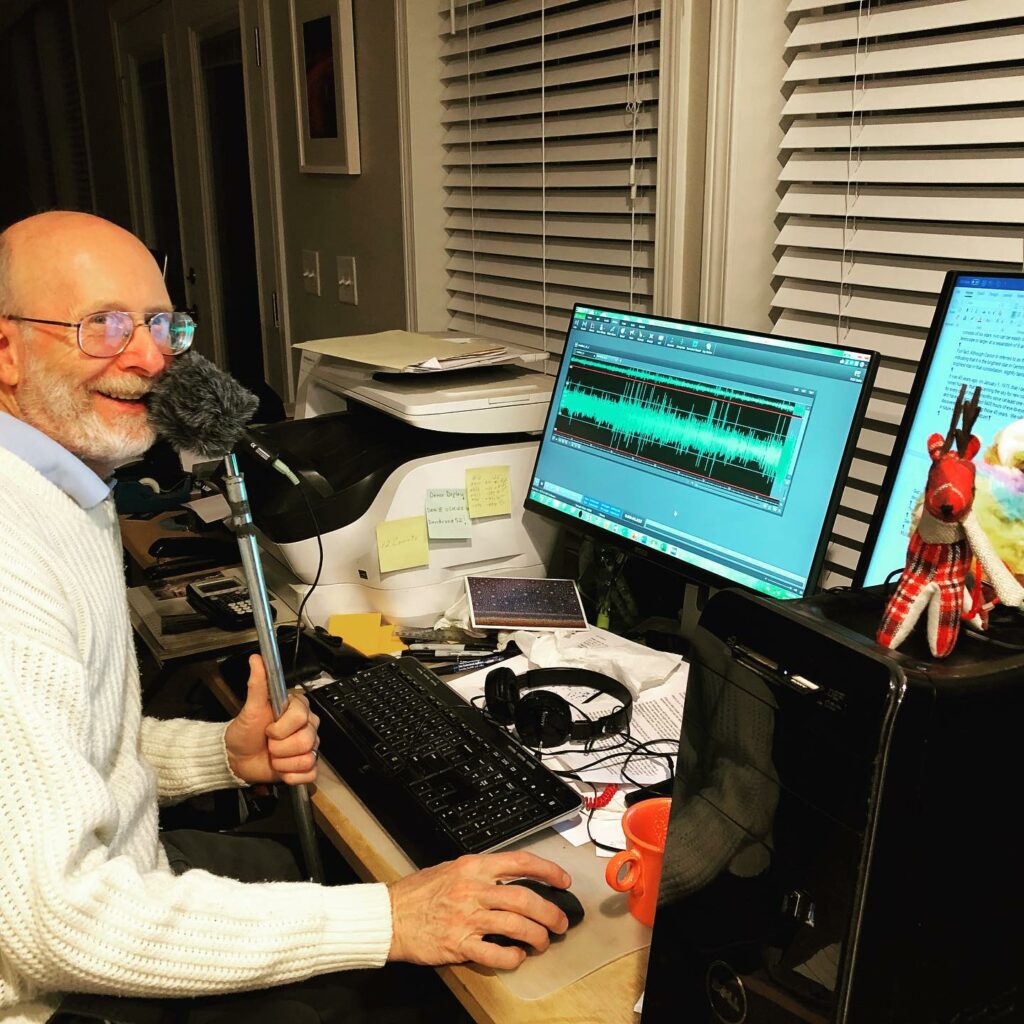The Discovery of Comet 2018 V1 (Machholz-Fujikawa-Iwamoto)
The second half of October 2018 yielded clear skies, so I was able to get out and search for comets in much of the available morning predawn sky. Following the full moon on October 24, I was able to search in the evening (October 29) while waiting for the moon to diminish in phase in the morning sky. As the moon grew smaller and dimmer each morning in the morning sky, I was able to search on November 3 and November 6 for a couple of morning sessions. These comet hunting sessions resulted in a map that looked like this:
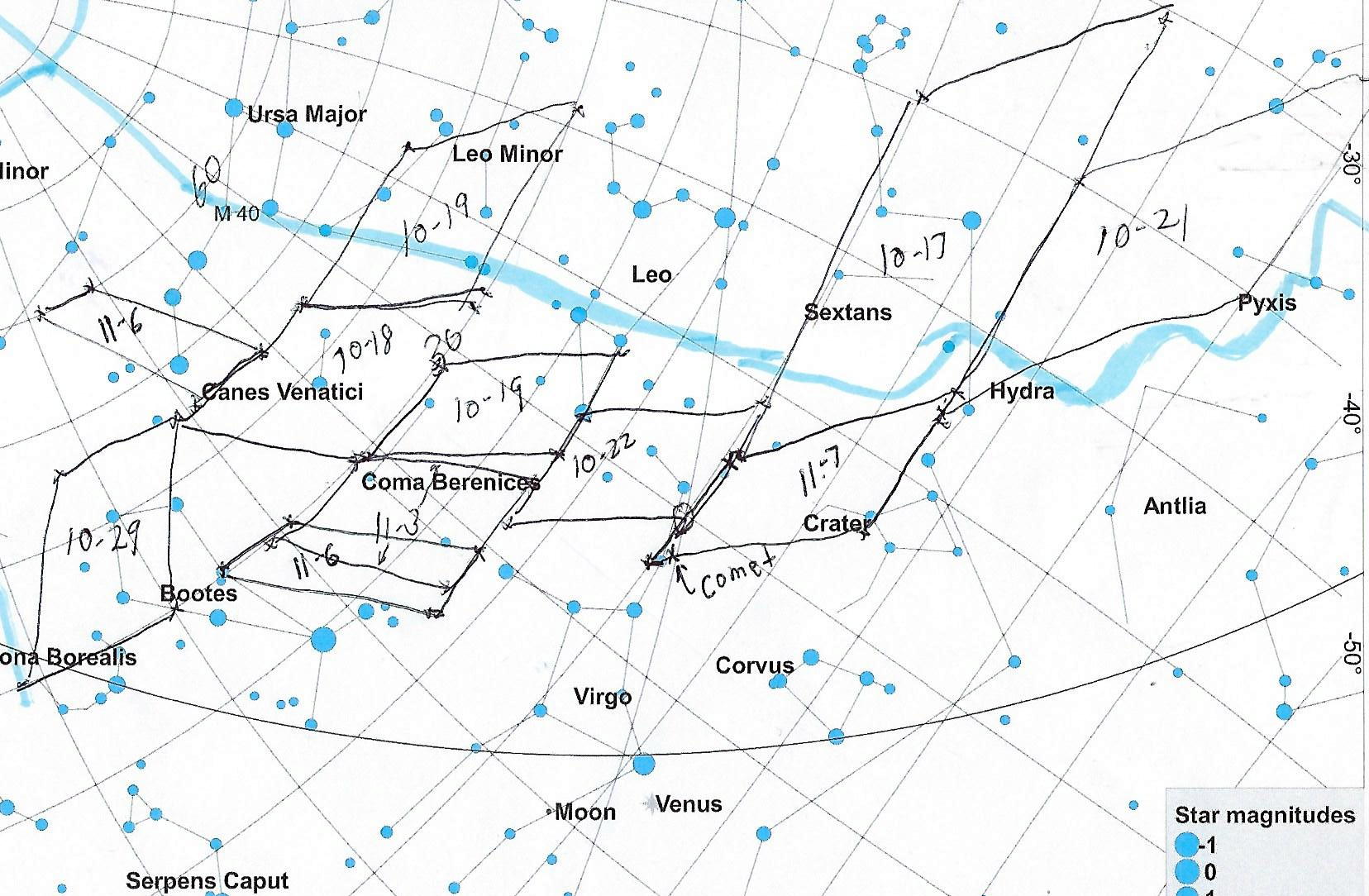
The blue line separates the area covered by the search surveys as of November 6 (above the line) from those that have not been covered (below the line). The dated boxes are areas that I visually swept on the stated dates.
On November 6 I swept a northern area (+45 degrees to +60 degrees declination) and a second area, in the constellation Bootes, from +30 degrees to +15 degrees declination.
That brings us to the morning of November 7. Where should I search? The options were to begin where I had left off on October 22, 17, or 21. All were areas where the sky surveys had not yet covered (the area below the blue line in the map above). I chose to start near where I left off on October 17, an area starting at the celestial equator and sweeping south to -15 degrees declination.
The building that I am observing from is a roll-off roof observatory that I built on my property in Colfax, California in 1993 and have remodeled since. It measures 16’ x 10’ and houses my 18.5” (0.47m) f/4.8 reflector telescope on a Dobsonian mount. I bought this telescope in May 2006 and have used it for most of my comet hunting since discovering my previous comet with it in 2010. The eyepiece I have been using for the past few months is made by Stellarvue, a telescope company based in nearby Auburn, CA. It is of 20 mm focal length and provides a magnification of 113 and a field of view of just under one degree.
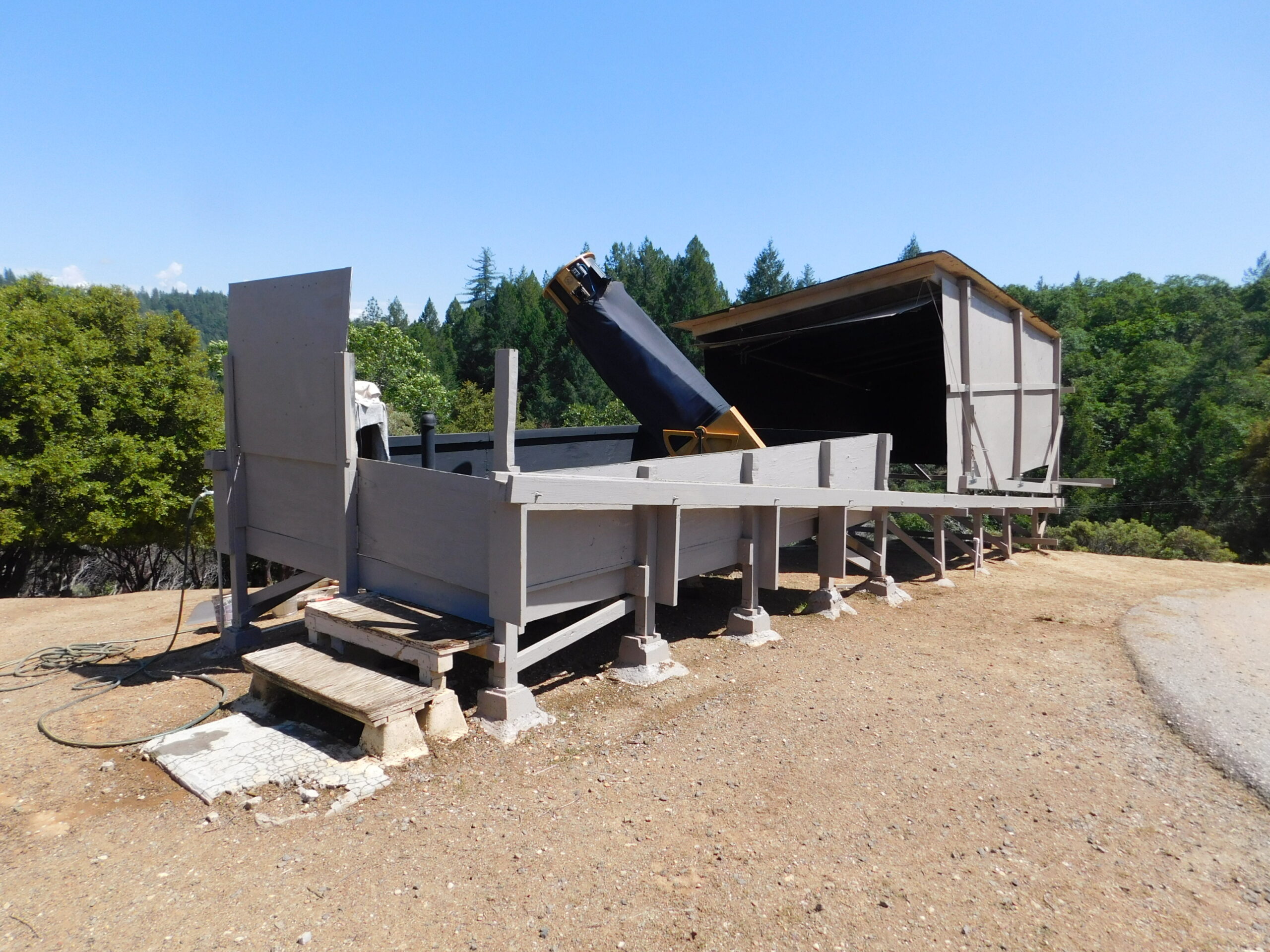
I began sweeping at 0355 PST. My sweeps are in the horizontal direction, from the north towards the south, and at the end of each sweep, I swing the telescope back to the starting point, give a tiny nudge down, and sweep again. Due to the earth’s rotation, and the sky moving upward during the previous sweep, the new sky will now be seen in the next sweep. I have been doing this for years and have accumulated 8400 hours since I began systematic visual comet hunting on January 1, 1975.

In the course of the sweeps this morning I picked up some galaxies, two meteors, and two artificial satellites. I was listening to i-Heart Radio, the Jim Bohannon show, being rebroadcast on station KSTE. He was discussing election results from the previous day.
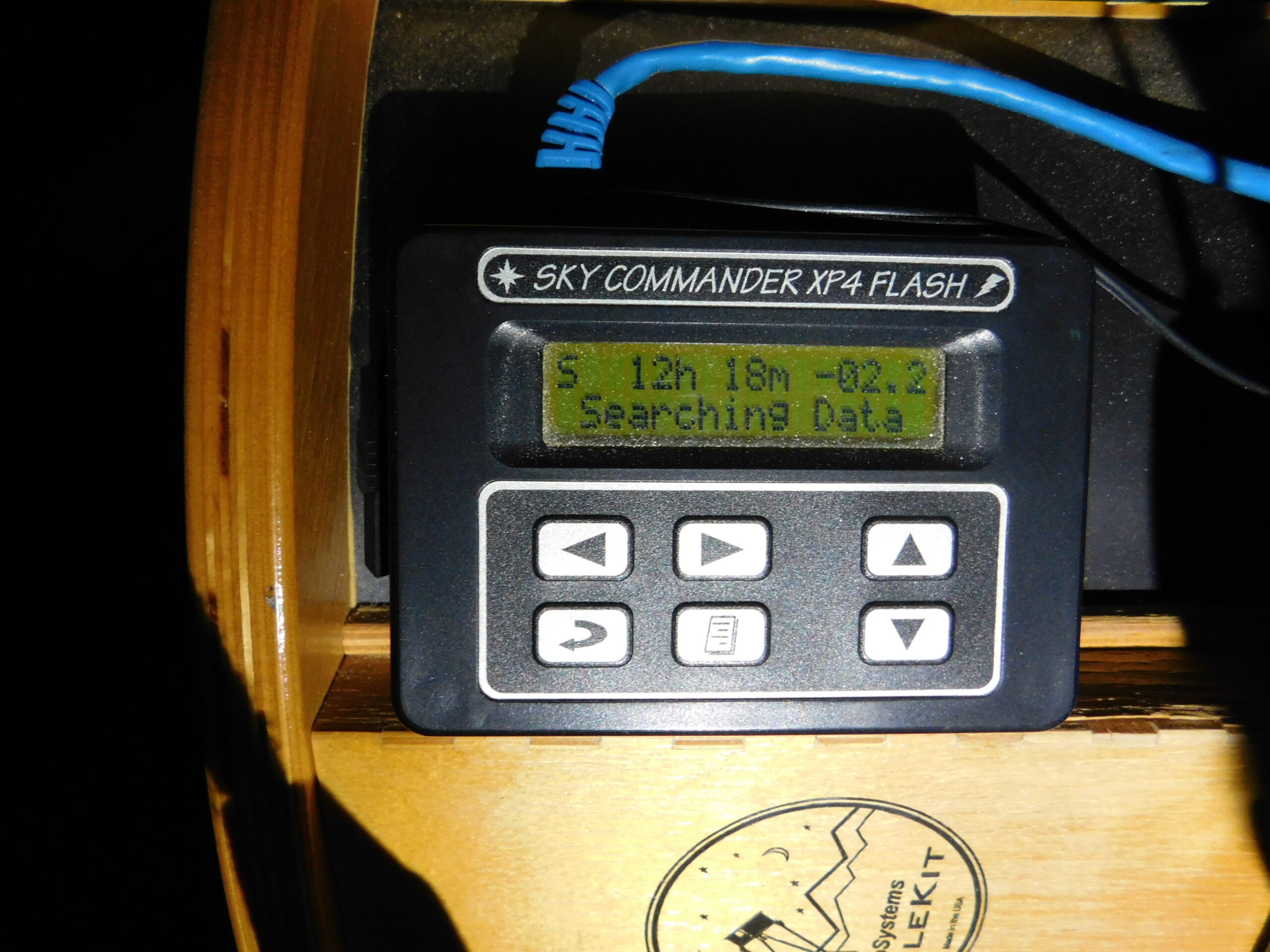
At 4:44 AM I came across a nebulous object, the brightest I had seen this morning. I stopped sweeping and looked at it carefully. It definitely was there and easily visible with direct vision. I looked up at the small computer output screen mounted just above my eyepiece. It is connected to digital setting circles and shows me where in the sky I am pointed and what, if any, objects are in the field of view. If no known galaxies, clusters, or nebulae are in the field it says, “Searching Data”.
It said: “Searching Data”.
Possibly the telescope had not been aligned properly and doesn’t know exactly where it was pointed. But that seemed unlikely since it correctly identified the galaxies I had picked up while searching earlier.
So, I knew there was definitely something in the sky, and it is not a known galaxy. I knew it had to be a comet.
One might think that at this point I would celebrate and take a break to reflect upon the moment. For each of my comet discoveries, that has never been the case. So much more needs to be done before we can be sure we have a reportable object.
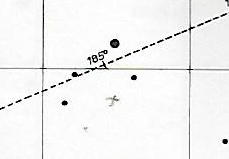
I reached for my phone and went to the website of Seiichi Yoshida. He is a Japanese comet observer whose website lists all the comets that one could possibly see in our skies each week. Using the rough coordinates, I searched through the list and found no known comets in this area. It was now 4:49 AM.
All comets move against the background stars, and generally, this motion can be detected within 30 minutes. The way to check this is to make a sketch of the field showing the comet in relation to the background stars and wait to see if it moves. I did that at 4:51 AM.
I then went to my Uranometria Star Atlas and made a small x at the point where the comet was located and drew in a faint star that I saw but was not on the map.
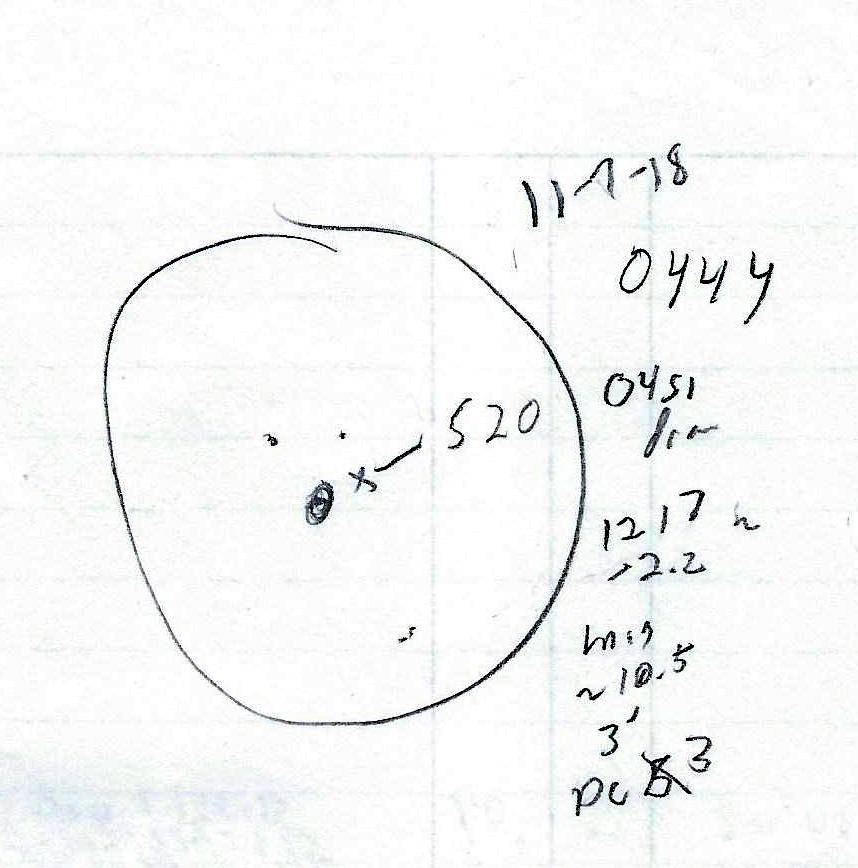
I phoned my wife Michele at 4:56 AM, but she missed the call and called me back immediately. She was in bed, in our house about 100 feet away. I told her I had a suspected new comet in the eyepiece and asked her to come out and join me. She did and was able to view the object.
I continued to keep it in the field of view and over the next 30 minutes, I could detect the motion of the object. So, I knew for sure that it was a comet, and from the comet website, I knew that there were no known and confirmed comets in the area. So, it was a new comet. Here is where I made an error, and that was in the direction of the comet’s motion. With my small drawing being offset from the north, I estimated the direction of travel to be to the north-northwest, when in fact it was actually moving east-northeast. I closed up the telescope and went into the house.
My next check was to the MPC/CMT Checker, a website run by the Minor Planet Center in which one requests whether or not a known object is presently located at any given position in the sky. I entered the position of this object, 12h 18.2m, -02 degrees, 12 minutes. No known comets were near that position.
With eight years passing since my last visual discovery, I had to look up to see how to report a visual discovery. In the ensuing years, the comet community had developed a system to report objects with very accurate positions, something that is easy to calculate when the comet is imaged with a photograph or a CCD (Charged-Coupled Device, an electronic camera). I had an “approximate” position, and no photo image to prove I had seen anything. Long gone are the days when I could pick up the phone and tell the director of the Central Bureau of Astronomical Telegrams about the new find. So, at 6:04 AM I e-mailed a message to [email protected] about the comet find. At 6:12 I left a phone message with Daniel Green of the Harvard University Department of Earth and Planetary Science. At 6:20 AM, I received a message back from Gareth Williams, Associate Director, Minor Planet Center asking me to get confirmation as soon as possible
I began contacting amateur astronomers around the world asking them to observe the comet and confirm its existence. Almost no one responded, and those few who did were not able to get out and observe it. I wrote back to Dr. Williams at 7:36 AM and gave him the time of discovery (I forgot that item in the original email) and indicated that I was having trouble getting anyone to confirm it. It was looking like it may have to wait until I observe it the next morning.
Later in the day, we came up with the idea of using the SLOOH telescopes in the Canary Islands to observe the comet later that evening, at 9:15 PM our time. This would provide confirmation before I would be able to see it again the next morning. Michele re-activated her account and set up four 5-minute sessions with the telescopes pointed toward the discovery position with some bias toward the direction I believed it was traveling. The first photo showed nothing, as did the second. The next move would be to direct the telescope to a slightly different position for the final two images but we were unsure if we could redirect the SLOOH telescope with only a few minutes before the next two and did not want to mess things up so we left it as originally programmed and got nothing on all four images.
Meanwhile, at about 1 PM my time on the day of discovery, the comet was also discovered by two Japanese amateur astronomers, both using CCD imaging. Shigehisa Fujikawa, who in the past four decades had visually discovered 7 named comets, picked it up using a 120-mm F3.5 lens. About one hour and fifteen minutes later Masayuki Iwamoto picked it up using a Pentax SDUF II (Diameter = 100mm, FL = 400 mm) + EOS6D Canon body. They sent their discovery information to the National Observatory of Japan and they sent it to the Central Bureau of Astronomical Telegrams “Transient Objects Confirmation Page” (TCP). That page is for variable stars and novae, not for new comet discoveries. Since it was not sent to the Minor Planet Center, this report was unknown to the MPC for many hours.
Late in the discovery day, the object was added to the NEO (Near Earth Object) Confirmation name under the designation DM001. This encouraged others to confirm the object and secure accurate positions.
I woke up the next morning shortly after 3 and the comet hunted an area in the northern sky for 45 minutes. At 4:25 AM I turned the telescope to the position of the discovery and searched the area. In a couple of minutes, I picked up the comet, it had moved to the NNE by more than one degree. I noted its position and brightness, came into the house and printed out a detailed sky map of the area, and woke up Michele who then came out to see it.
Unknown to all and unrelated to the discovery of this comet, at 6:30 that morning about 100 miles to my northwest a fire was starting in the town of Paradise, CA. This would become known as the CampFire, which destroyed much of the town of Paradise and killed more than 80 people.
About the time I was observing the comet, astronomers were imaging it and getting accurate positions. This not only confirmed the existence of the comet but produced data so that an orbit could be determined. Later that day the comet was announced by the Central Bureau for Astronomical Telegrams, on Electronic Telegram No. 4569, issued by Dan Green. The comet was not yet given a name but referenced the TCP # J12192806-0211143. It would take a few days before the name would be attached because the orbit must be determined first to make sure it was not a lost returning comet.
On November 11, four days after my discovery, the Minor Planet Electronic Circular # 2018-V151 announced the name: Comet C/2018 V1 (Machholz-Fujikawa-Iwamoto). This was my twelfth named visual discovery since I began systematic comet hunting on January 1, 1975. I had done 8400 hours of comet hunting since then and 746 hours since my last find on March 23, 2010. Later in 2010, another comet was discovered visually (Comet 2010 V1 (Ikeya-Murakami), so it had been 8 years since the previous visual comet discovery.
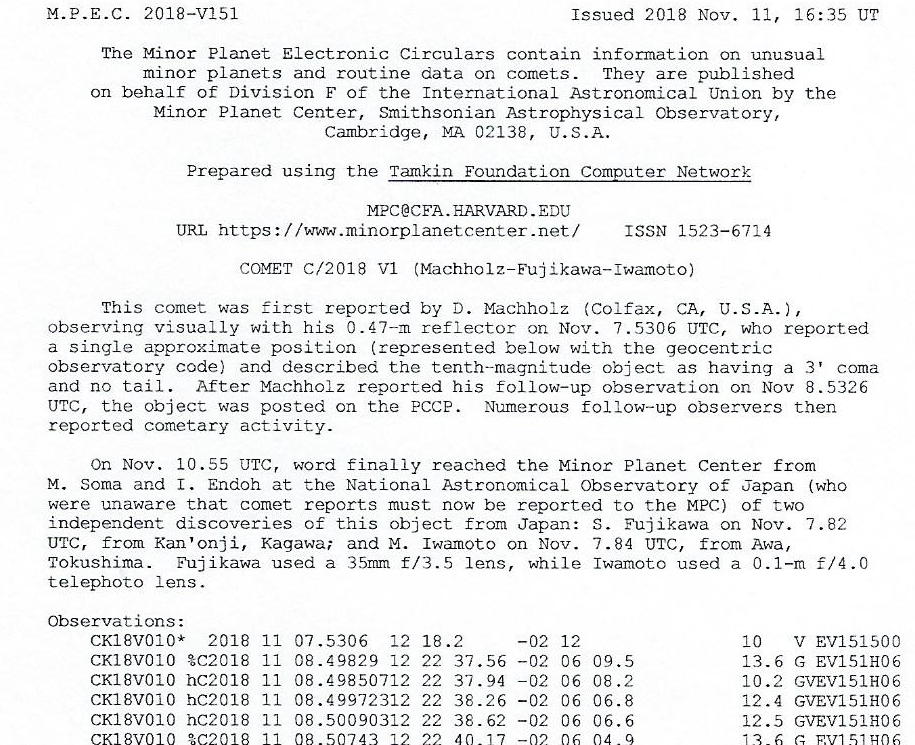
The comet continued to move northward through the morning sky and north of the sun. It then entered the evening sky. I observed it on ten mornings, and then once in the evening sky. I tried for four more evenings but did not see it. My last observation was on December 7, 2018, a month after I discovered it.
The orbit calculation showed that the comet was at its closest point to the sun on December 3, 2018, a month after discovery. It got nearly as close to the sun as the planet Mercury, 0.39 astronomical unit, which is 36 million miles. Inclination or tilt of the comet’s orbit is 144 degrees, which is retrograde and at a fairly high angle. Prior to the discovery, it was closer to the sun and fainter which helps to explain why it was not found sooner.
My notes show that on October 17 I stopped sweeping about one degree above the comet, stopping due to the oncoming twilight. If I had continued sweeping I most likely would not have seen the comet since it was probably nearly two magnitudes fainter and in the brightening twilight sky. I did, however, pick up galaxy NGC 3521, six degrees above the comet, and much brighter. Then on October 22, I swept to within a few degrees north of the comet under darker sky conditions. How close? The comet was at a declination of -3.6 degrees and I swept southward to the equator (0 degrees) and with my usual overspill of 1-2 degrees I probably came within 2 degrees of the comet.
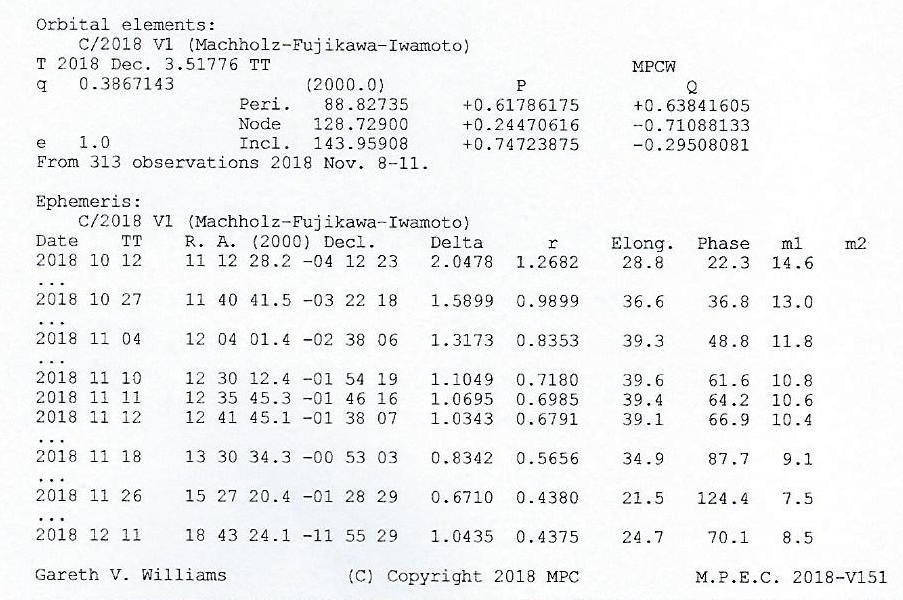
The orbit also showed an eccentricity of 1.0006, later refined to 1.0003967. While a circular orbit has an eccentricity of 0 and a parabola of 1.0, anything larger than 1.0 implies the comet’s orbit never closes in on itself at its farthest point from the sun and it will never come back. This prompted the publication at Cornell University of a paper entitled: Comet C/2018 V1 (Machholz-Fujikawa-Iwamoto): Dislodged from the Oort Cloud or Coming from Interstellar Space? This paper suggests that although this comet may have come from the Oort Cloud, it may have instead come from another star, and such comets are not rare. A year later the discovery of the first verified interstellar comet (Comet 2I/Borisov, with an eccentricity of 3.36) muted further discussion of these lower eccentricity comets also having an interstellar origin.
